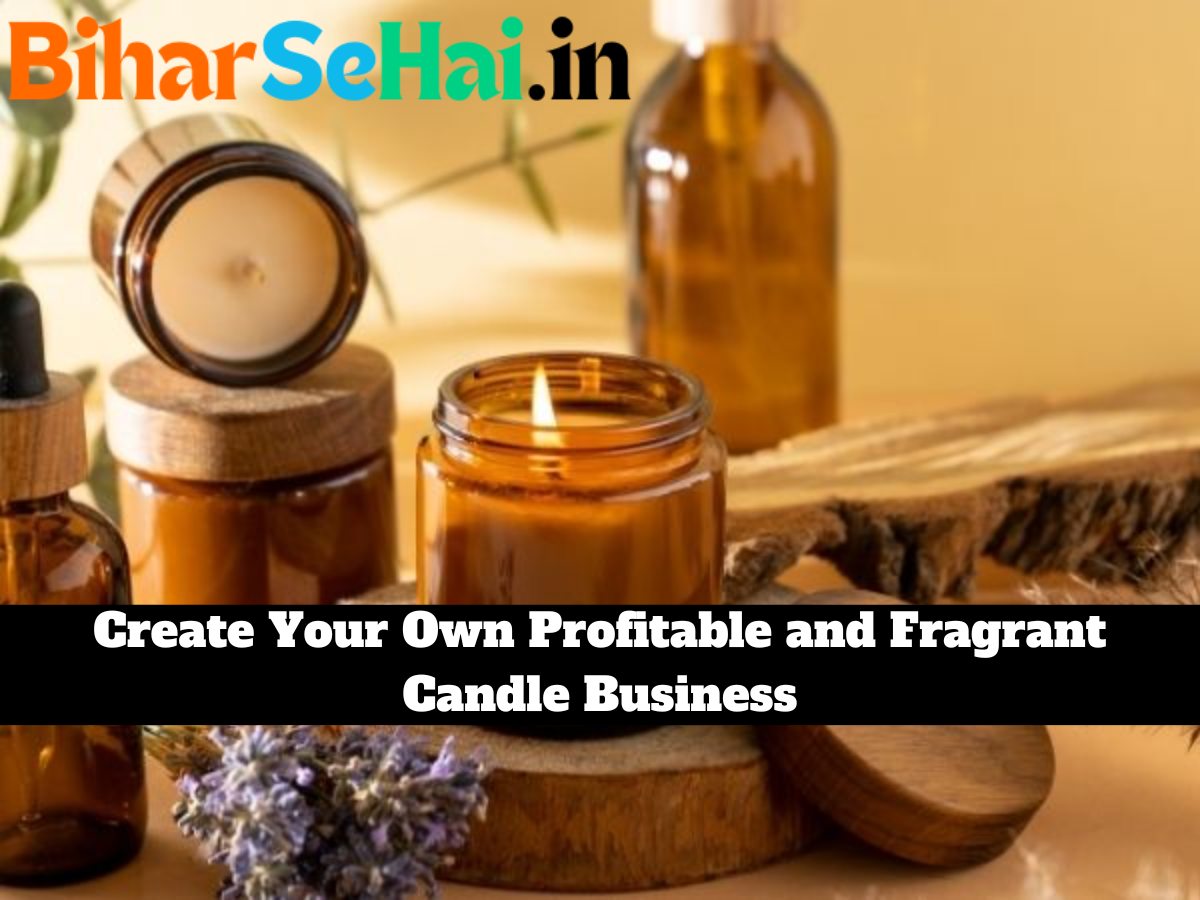Making scented candles can be a fun, creative, and potentially lucrative business. Handcrafted candles make great gifts, home decor items, and more. This comprehensive guide covers everything you need to know to start your own successful candle making business.
Candle Making Supplies You’ll Need
These basic supplies are essential for candle production:
- Wax – Common types are paraffin, soy, beeswax, palm, and blends. Paraffin wax is affordable and easily available.
- Wicks – Pre-tabbed wicks optimize the burn. Match wick size to the candle diameter.
- Fragrance oils – Special formulated oils that hold scent when burned. Essential oils lose aroma.
- Dyes – Use candle dye, never food coloring, to add color. Liquid or chips work.
- Containers – Glass and metal jars, tins, votives. Ensure it’s heat safe up to 180°F.
- Pour pot – Use a metal pitcher for heating and pouring wax. Avoid plastic.
- Thermometer – Monitor wax temperature since too hot or cool affects results.
- stickers and shrink wrap – Professional packaging finishes off your candles.
Types of Wax for Unique Homemade Candles
Experiment with different wax varieties:
- Paraffin – Most widely used. Affordable cost. Customizable melt point. No scent throw of its own.
- Soy – Made from soybeans. Natural and renewable. Good scent throw. Easier cleanup.
- Beeswax – From bee hives. Natural. Sweet honey scent. Expensive but higher quality.
- Palm – Derived from palm oil. Economical option. Low melting point. Good scent throw.
- Gel – Translucent and flexible when cooled. Works well for embeds and layered designs.
- Coconut – Made from coconut oil. Has a tropical scent. Hard finish and clean burn.
Using Fragrance Oils vs. Essential Oils
Key differences between fragrance and essential oils:
- Fragrance oils – Specially formulated for candles. Long-lasting scents. Wide variety. Generally inexpensive. Can blend scents.
- Essential oils – All natural but more expensive. Limited options. Scents dissipate faster. Usually only combine 1-2.
- Usage – Fragrance oils – up to 1 oz per pound of wax. Essential oils – .5 to 1 oz per pound of wax.
- Scent throw – Fragrance oils project aroma stronger as they are designed for high heat.
- Burn quality – Essential oils may alter wax burn performance. Fragrance oils won’t change properties.
Creative Techniques for Unique Candle Designs
Make your candles stand out using special methods:
- Layers – Stack poured wax in different colors for striped look. Adhere with glue dots.
- Embeds – Place objects in wax like dried flowers, seashells, coffee beans.
- Two-tone effect – Coat the inside of container with one color before adding main color.
- Marbling – Pour alternating colors then swirl gently to marble.
- Glitter or shimmer – Stir in cosmetic grade mica powder or glitter before pouring.
- Geode style – Suspend wax shards or crystals in clear gel wax.
- Splatter – Flick wax dots over top with a paint brush before cooling for a splatter effect.
Blending Unique Scent Combinations
Some tips for blending scents:
- Start with a dominant scent then add secondary scents sparingly.
- Group fragrance “families” like florals with herbs or fruits with bakery scents.
- Limit blends to 2-3 scents max to avoid muddying aroma.
- Consider scent combinations that evoke a theme like beach scents (coconut, suntan lotion) or morning bakery (vanilla, blueberry muffin).
- Always make and test samples before fully committing to a blend.
- Keep detailed notes on your fragrance recipes to replicate successes.
Best Wicks, Vessels and Dyes for Candles
Some product recommendations for optimal performance:
- Wicks – Use wood or paper cored wicks instead of zinc. Popular brands are Eco, CD, LX.
- Jars/Tins – Glass apothecary jars show off colors and embeds beautifully. Tins excellent for travel.
- Dyes – Liquid dyes easier to mix in. Spectrum brand is top quality. Neon dyes glow under black light.
- Votive holders – Use metal, glass or ceramic. Avoid holding multiple votives together with wax as this poses a fire risk.
- Wood wicks – These crackle wicks put on a mini firework show. Great for wow factor.
Professional Candle Branding and Labeling
Branding makes a memorable impression on customers:
- Show creativity with a fun, descriptive business name like Wicks & Wax Workshop.
- Design a logo that looks great on labels, packaging, business cards, and your website.
- Use cohesive label colors and fonts so products have a consistent look.
- Ensure labels include your branding, scent name, weight, burn time, care instructions, and any warning labels required by law.
- Consider unique label shapes like hang tags, sleeves, or bands to stand out.
- Print labels on weather/fade resistant materials so info stays intact on used candles.
Effective Ways to Market and Sell Candles
Some proven sales strategies include:
- Start by selling to friends, family, coworkers. Get feedback.
- Set up a booth at local fairs, markets, and holiday bazaars.
- Create an Etsy shop, online store, or website to sell nationwide.
- Approach local gift shops, boutiques, and museums about carrying your products.
- Partner with related businesses like florists or bakeries to co-market.
- Run promotions like free samples, giveaways, or seasonal scent specials.
- Share your brand story and process on social media and blogs to build an audience.
- Offer corporate candle etching/branding for businesses to sell unique promotional items.
Legal and Safety Considerations
To cover your business legally:
- Review FDA candle regulations on labeling requirements, warning statements, and restricted ingredients.
- Check state and local regulations. Some require special business licenses or permits.
- Use insurance to cover risks if selling wholesale or retail.
- Ensure your production methods and workspace are safe with proper ventilation, equipment, and fire precautions.
- Choose child-resistant packaging if selling to the public since candles can pose burn risks.
- Always test candle burns for issues like arson, mushrooming, or smoking to improve quality.
Pricing and Profitability Tips
Some pricing best practices:
- Price based on material costs plus your desired hourly wage. Track expenses in a template.
- Charge more for specialty ingredients like essential oils or labor intensive techniques.
- Research competitor pricing but don’t undervalue handmade quality.
- Offer tiered pricing between basic vs. premium lines.
- Calculate suggested retail cost at 2-3X your wholesale cost.
- Bundle sets or packages for gift giving occasions and increase overall sale value.
- Start low while testing products and raising prices as you build reputation.
- Use promotions like first-time customer discounts or holiday sales to boost revenue during slower periods but don’t devalue products.
Growing a Successful Candle Brand
Once established, focus on scaling through:
- Consistent product quality and branding
- Excellent customer service and communications
- Search engine and social media optimization
- Expanding sales channels online and physically
- Profit reinvestment into better supplies and pro equipment
- Automating processes where possible
- Partnerships with aligned brands
- Diversifying product offerings
- Seeking certifications like Fair Trade
You can turn candle making into a prospering business with passion, persistence, creativity, and effective marketing. The possibilities to invent signature scents and products are endless.

